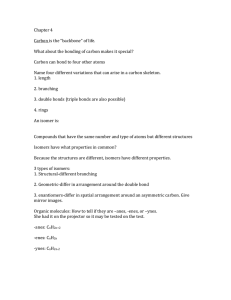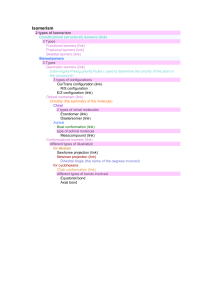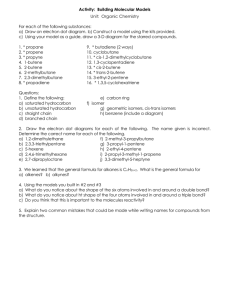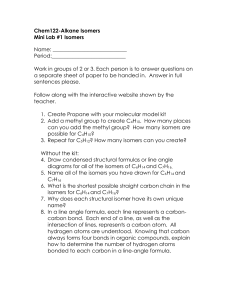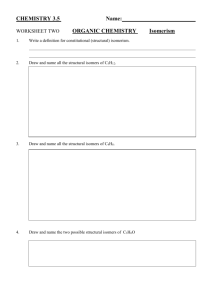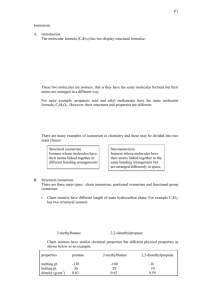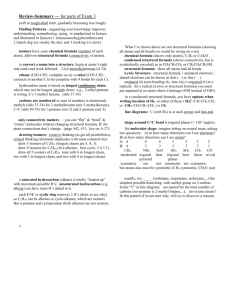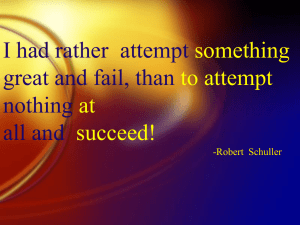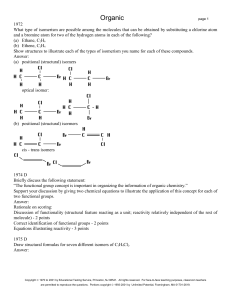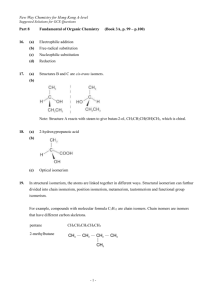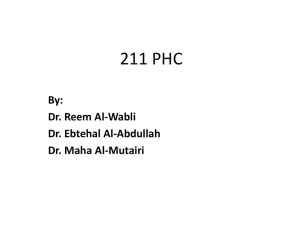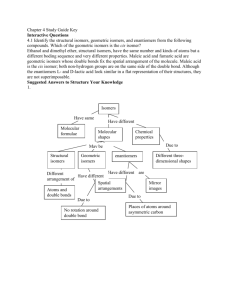ISOMERISM
advertisement
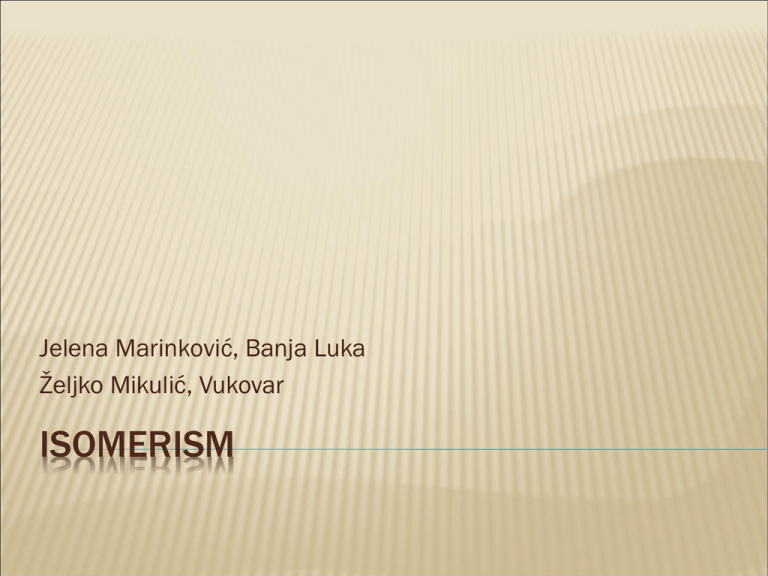
Jelena Marinković, Banja Luka Željko Mikulić, Vukovar ISOMERISM MANY THINGS IN NATURE LOOK SIMILAR, BUT THEY ARE COMPLETELY DIFFERENT ! THE IMAGE IS DERIVED FROM CESAR DOGFOOD ADVERTISMENTS FIND THE DIFFERENCE! OH H H HO H HO H H OH OH OH H O H H OH OH H HO OH O H H H O OH H H H O HO H HO OH H H H OH H OH OH H HO OH H H O OH H H H OH H O HO HO OH H OH OH H H HO OH H OH INTRODUCTION Isomers are different compounds that have the same molecular formula. Different compounds means that they have different physical properties (melting point, boiling point etc.). They may also have very different chemical properties depending on the type of isomerism present. Isomers may be divided into structural isomers, in which the atoms are joined in a different order, so that they have different structural formulae stereoisomerism, in which the order in which the atoms are joined is the same, but the molecules have a different spatial arrangement of the atoms and hence different three dimensional shapes. AIM Students should realize that different structural formulas can be made from the same molecular formula. The aim is developing the logical way of thinking, in the propose that the knowledge could be used in everyday life. We are going to do this topic in different ways, Željko will do this with second year students (age 16), during the organic chemistry lessons, and Jelena will do this with fourth year students (age 18), during biochemistry lessons. At the beginning, an open discussion should be done, about the differences in nature, and how similar things often are completely deferent. During the first class, Željko’ll do the introduction to alakanes, their structure and properties, and Jelena will do revision about carbohydrates. The aim of the first class is assimilation of basic knowledge about carbohydrates structure. During the second class students should make models of molecules. They have to make different structure with the same number of atoms ( making structural isomers based on the same molecular formula). Students should work within the small groups. At the and of the hour the have to present they work. During the third class, an idea of isomers should be explained, and how it reacts to physical and chemical properties. Some experiments could be done, depends on the laboratory equipment. During the fourth class, the introduction to alkenes should be done. Student should work within groups, making models of molecules with double bond. They have to recognize, that rotation around double bond isn’t possible. They have to make presentation of their results. Based on the results, a definition of the geometric isomerism should be explained. During the fifth class, the knowledge about structural and geometric isomers should be applied to the discussion about various differences in nature. During the sixth class, students will apply the gained knowledge about isomers to the new topic about alkynes. Jelena will make a different approach. First class will start with the revision of the structural, geometrical and stereo isomers. Second class, teacher presents the structure, properties and appliance of the monosaccharide. Students will get cards filled with various structures of epimers and entiomers of the monosaccharide. They should classify them into groups- L and D forms and α and β forms. They should link the pairs of certain enatiomers. Double class is going to be used for a visit to the Faculty of Chemical Technologies, where they will define the certain forms of sugars in the laboratory for the organic chemistry. Results will be put down in their note books. Evaluation class The appliance of the gained knowledge in the further field of biochemistry, e.g. proteins, nucleid acids etc .
